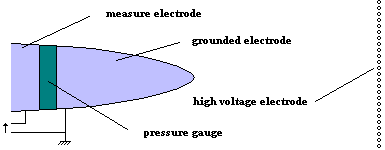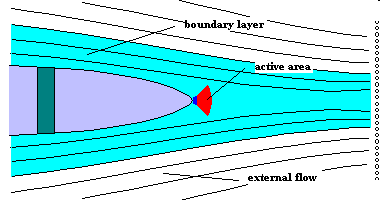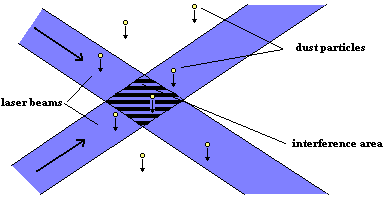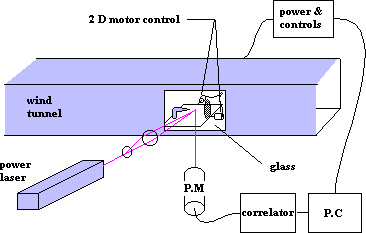
|
Author's experiments |
|
|
The neutral flow in the corona discharge gap
The second experiment was conceived in order to investigate higher speeds and to measure precisely the flow in the boundary layer. We only succeeded partially in the second aspect but were unable to investigate higher speeds (in fact we didn't even blow on the model ). However this experiment is very interesting as a starting point to new studies of the interaction between electric flow and boundary layer.
In order to obtain higher speeds we decided to use the supersonic wind tunnel of the O.N.E.R.A in Meudon near Paris. to measure the weak electric force acting on the point we tried to realise the following apparatus:

use of a pressure gauge
The objective was to put a constraint gauge as close as possible to the point tip in order to measure the resulting thrust and to avoid the drag and turbulence effect of the rest of the apparatus (down flow) excepted in the region were the phenomenon take place (a fraction of a millimetre).

whole description with boundary layer
In order to measure the flow very close from the tip, a non invasive method was needed. As a solid body either conductive or insulator will have strongly interfere with the discharge we decided to use an optic method: laser anemometry.

laser anemometry (principle)
The idea of laser anemometry is to measure the speed of very small dust particles crossing an interference area. Because of the very small wavelength of optical light it is possible to create a very small area where the interferences are produced by crossing two very small laser beams of the same frequency. Knowing the wavelength of the interference permit to compute the speed using the frequency modulation of the light diffused by the particle crossing the area and amplified by the use of a photo-multiplicator (P.M). In spite of the use of the P.M and because of the very small size of the submicron particles the power needed for the laser beam was in order of the Watt (needing severe optical protections). Because the particles were entering the area randomly it was necessary to use an autocorrelator in order to obtain the transit time of the particle between two (fringes).

whole apparatus
Finally in order to measure the flow in several points it was necessary to realise a 2 D mobile equipment with a feed back to know the exact position of the measure point of the flow.
As you see this experiment was quite sophisticated but we were able to obtain with the laser anemometry the flow profile in the small region near the point (witch has a typical jet profile).

Flow profile (click to enlarge)
Unfortunately because of budget restrictions we were unable to pursue this work. We were also unable to realise the small constraint gauge needed for high speed measurements. Because the results were not sufficient (the flow profile was known by indirect measurement of the flow (usual Pitot tube measurement down flow) this work was not published.